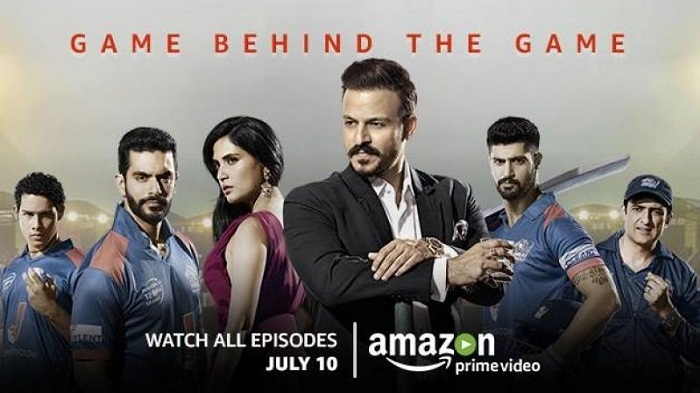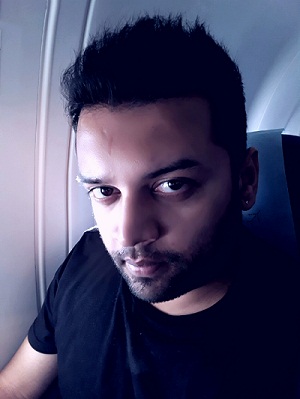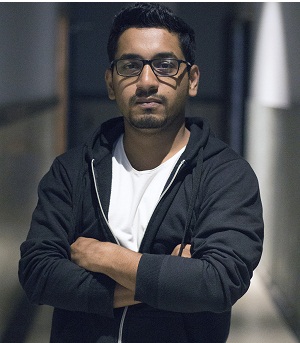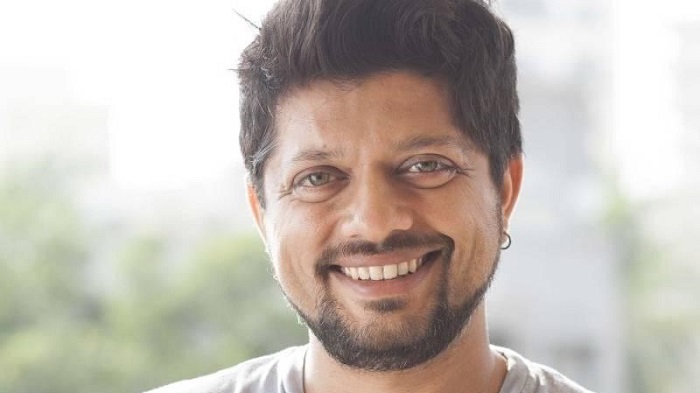
India’s first live-action web series Inside Edge has certainly gone down well with the fans. The show has garnered largely positive reviews and also an encouraging viewership.Chronicling the role that power and politics play behind the scenes in cricket, the Vivek Oberoi-starrer tells you a thrilling tale which hasn’t been before.
The story and stellar cast aside, the webseries also boasts of deceptively amazing visual effects which further adds to the gloss. AnimationXpress spoke to VFX supervisor Sagar Mehta as well director Karan Anshuman regarding what went behind making of the webseries.And he lifted the lid off the VFX secret of the cricket stadium scenes as well as a lot more that happens behind the camera.Here is our conversation with Sagar Mehta.
How is the experience to work on the most watched show on Amazon Prime?
The entire ride was nothing short of a rollercoaster. Now at the end of the ride when we see how far we have come and what we have accomplished, we are in awe of the product itself. To add to this, Inside Edge becoming the most watched show on Amazon Prime is the perfect icing on the cake.
How many VFX shots does the show have in all?
There were more than 1200 VFX shots! This kind of a scale for a web-series in India has never been done before and in that unknowingly we have established a benchmark.
How did the show manifest?
We had got the footage and thereafter discussions ensued. Once we figured out what all kind of creatives, challenges were involved, we put the pedal to the metal.

How was it working with Amazon Studios and Excel Entertainment?
Amazon and Excel both have been very supportive, co-operative throughout the entire production. There was a lot of learning for all of us combined which will go a long way in future collaborations.
How have you worked on the cricket stadium scenes?
The process started off with brainstorming sessions where we first visualised how the end product should be. We discussed all the probable challenges and the ways in which we can tackle them. We understood early on that we are dealing with the game of cricket, that is loved world over but India as a nation takes the subject very seriously. To convince the audience that PPL is an actual format we had to create the right atmosphere. Covering all the basics like the actors, cricketers, cheer leaders, team owners, stadium was an essential.The only thing that was missing was the actual crowd in the stands. The logistics of assembling a crowd of 50,000 to fill the stadium would have been a nightmare. Owing to this, we decided the solution to go in for would be simulation. We worked hard to create a generic crowd made up of four sets of males and eight sets of females – enhanced with the wardrobes that included jerseys, caps, waving flags, animation cycles and more.
Which was the most challenging VFX shot?
Two main challenges were the sheer volume of shots i.e. 1200 and the crowd of cheering fans seen in the stadium stands. Additionally, the team logos, shirts, the way the name appears, the score card, everything had its own unique appearance and style. Sagar Mehta – our VFX supervisor – played an integral role of leading the team towards a successful delivery – both on-set as well as in the studio.
This is Amazon Prime’s first Indian original series. How was this different from working on a film?
Well the only way it is different from a film is that it is divided into 10 episodes.
When it comes to quality of work we give equal importance to both. The planning and execution of the VFX shots is the same as we usually do it for any film.
In fact we had to be extra careful with this project as we had to deal with a lot of VFX elements along with its content. For example, during every match played, we had to be very accurate about the score card, score tickers, run counts, run-rate, bowling stats and so on.
In addition to this, every time a TV screen flashes a news scene, we had to be accurate with the content of the news on the animated tickers. Overall, I would say we executed this project as efficiently and smoothly as we would do for any film.
Could you talk about the lighting work involved?
Lighting is a very delicate aesthetic that involves a lot of subtleties. Keeping this in mind – Amit Patil (CG supervisor) – worked rigorously to find the best way to integrate the crowd in a way that it looks natural. CG lighting is fairly less complex as we use physical based renderers. However lighting during the night shoots was a bit tedious as we manually have to put all the lights in CGI to get the desired effect.

How tight were the deadlines?
The deadlines were reasonably tight as every episode had its own uniqueness in terms of scope of work and the time allotted for the same.
While few episodes were a little light to execute, few of them were heavy in VFX and motion graphics. We managed to plan well in advance so that our execution went as smooth as possible. With tight deadlines, we managed to fulfill the director’s requirements. There were creative changes that were efficiently corrected and delivered in the specified time period.
The shots came episode wise and as far as the first draft is concerned, Nilesh Posnak was instrumental to handle the track data and matching the CGI crowd to the live plate and then sending it to the next department.
How did you manage in case the work went beyond the deadline?
Such an instance hasn’t happened till now. We have delivered everything on time and delivered quality shots. So we have done fairly well in terms of meeting our deadlines and also maintaining the quality of VFX in the process.
How did Fluiidmask manage to pull it all off successfully?
I would say the entire team has contributed towards it. Being a huge project where we have more than a thousand shots to deliver, and so much variety of work (CG crowd, chroma shots, digital screens, motion graphics, clean-ups), the entire team at Fluiidmask took it as a challenge head-on. It is only due to team-work that the show has become a hit. Nobody can identify the number of VFX shots in the episodes, it’s that invisible.
Was it difficult to bring about the director’s vision of the VFX, CGI?
The director – Karan Anshuman, was very sure that a direct comparison would be made between IPL and its fictional counterpart in the show – PPL. So right from start he made sure to take extra efforts to create team names, the logos, costumes and when it came to animation – things like team logo reveals, scoreboard displays and flags. The whole idea was to create a natural viewing experience for the audience, so the major play was to use visual effects that are invisible.
What did the actors have to say about the visual effects?
During the special screening, the entire team including Excel and Amazon, along with the actors were pleasantly surprised with the work. More so because during the shoot, there was no crowd at all! The stands were all empty. So when they saw the final output with the CGI crowd and all the VFX in place, they got super-excited. One of the lead actors of the show – Tanuj Virwani who plays Vayu – was truly elated and in that he congratulated us on our work. All the actors, producers and the captain of the show – Karan were highly appreciative of our VFX work.
Do you plan to do more such web series?
Yes of course! We’re in plans to work on more shows. And given the kind of response we have received for Inside Edge, we’d be more than delighted to entertain the fans.
On working with Fluiidmask, series director Karan Anshuman said:
Viral and I go long back and it’s always great to be working with him and his team. When Inside Edge was being conceived, Fluiidmask team was the natural choice to bring it to life. What I like about their work is the kind of detailing and effort they take in each shot, making the effect truly invisible. It is this kind of natural visual effects that really help the narrative as it helps telling the story in an unobtrusive manner.


